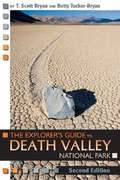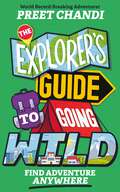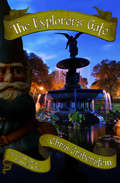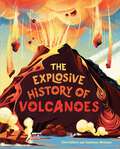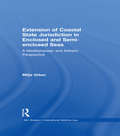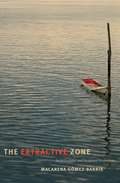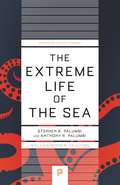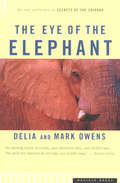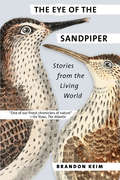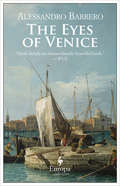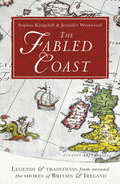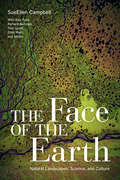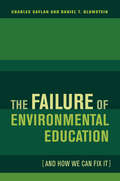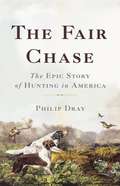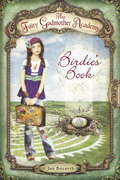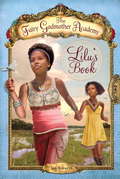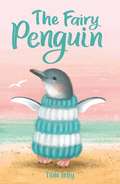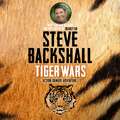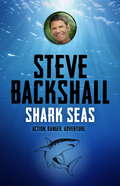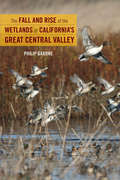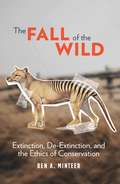- Table View
- List View
The Explorer's Guide to Death Valley, Second Edition
by T. Scott Bryan Betty Tucker-BryanOriginally published in 1995, soon after Death Valley National Park became the fifty-third park in the U.S. park system, The Explorer's Guide to Death Valley National Park was the first complete guidebook available for this spectacular area. Now in its second edition, this is still the only book that includes all aspects of the park. Much more than just a guidebook, it covers the park's cultural history, botany and zoology, hiking and biking opportunities, and more. Information is provided for all of Death Valley's visitors, from first-time travelers just learning about the area to those who are returning for in-depth explorations. Rewritten, reorganized, and revised, the book includes updated point-to-point logs for every road within and around the park, as well as new maps more accurate than those in any other publication. With extensive input from National Park Service resource management, law enforcement, and interpretive personnel, as well as a thorough bibliography for suggested reading, The Explorer's Guide to Death Valley National Park, Second Edition is the most up-to-date, accurate, and comprehensive guide available for this national treasure.
The Explorer's Guide to Going Wild: Find Adventure Anywhere
by Preet ChandiADVENTURE CAN BE FOUND JUST OUTSIDE THE DOOR A must-have book for kids who love to explore. Written by EXPLORER OF THE YEAR 2023, MBE Preet Chandi. Do you know a child who loves to explore but isn't sure how to plan their own adventures? Are they often preoccupied by an iPad when they could be outdoors? Then this is the perfect book for them! In this book, kids will learn how they can become a master explorer. Whether they want to learn how to camp in the wild, navigate their way through a new landscape, master bushcraft skills or plan a polar expedition, this book will show them how to do it.Each chapter has a mini challenge for young explorers to try at home, from learning how to read the stars to building a den. All these skills will help children to push their boundaries, build a resilient explorer mindset and get outdoors. And with fun black and white illustrations, having an adventure couldn't be easier! Written by world record-breaking adventurer 'Polar' Preet, who has been on adventures all around the world: from navigating 40 days on the Antarctic ice and a 700-mile journey to the South Pole to racing through the deserts of South Sudan. Preet shares tales of her own expeditions, big and small, as well as practical things kids can do, to inspire her readers to try new things and have their own adventures (even on their doorsteps!).Children will want to grab a copy, step outside and start creating their own adventure stories.
The Explorers' Gate
by Chris GrabensteinIn New York City's Central Park, remarkable things happen after the sun goes downNikki Van Wyck knows everything about Central Park. She can tell you how many benches it has, how many acres it is--and exactly where to find an adventure after dark. When she teams up with a few new friends to track down a treasure in the park, her expert knowledge comes in handy. But the place she thought she knew is transformed before her eyes as the statues begin to come to life!It turns out that Central Park has secrets that can't be found in any guidebook. Magical secrets. And what Nikki thought was just a scavenger hunt is actually much more. Now she's about to embark on an incredible adventure that will uncover the hidden enchantments in the park she loves--and reveal surprising things about herself, as well.
The Explosive History of Volcanoes
by Clive GiffordSpewing out fountains of red-hot lava and toxic plumes of smoke, volcanoes are dangerous and deadly. But every volcano is different - in shape and size, location and destructiveness.The Explosive History of Volcanoes explains the Volcanic Explosivity Index giving examples of more than 25 of the most, and least, explosive volcanoes in history and in the world today.Find out about these amazing natural phenomena and see how they're formed, where they are in the world and why some explode so violently. Discover why people live so close to volcanoes and how scientists are helping to predict when the next eruptions might occur.The consultant, Professor Katharine Cashman, is Professor of Volcanology, currently working at the University of Oregon.
The Exquisite Book of Paper Flower Transformations: Playing with Size, Shape, and Color to Create Spectacular Paper Arrangements
by Livia Cetti&“Equips crafters with the skills for creating individual flowers and larger arrangements while providing a delightful overview on the basics of botany.&” —Publishers Weekly In The Exquisite Book of Paper Flower Transformations, artist Livia Cetti ups the ante with a host of grander and more intricate flowers and projects—more blooms, more petals, stronger stems, and bigger, bolder arrangements! Cetti will teach you how to play with size, shape, color, and texture to create twenty-five vibrant single stems in a variety of natural shapes—globes, spikes, bells, saucers, rectangles, cones, and arcs—including hydrangeas, coral charm peonies, honeysuckles, and paperwhites. Then, you&’ll use these elemental shapes to build the 15 bright, abundant arrangements, including bold wreaths, bountiful bouquets, fantastical gilded wall art, and blooming garlands. Introducing new, never-before-seen techniques for dyeing paper and creating moldable leaves and petals, this gorgeous guide is perfect for crafters of all skill levels interested in making realistic and unique home decor, gifts, accessories, and entertaining essentials. &“Unlike fresh-cut flowers, paper blooms last forever. And if you make them like floral stylist, crafter and creative director Livia Cetti, they might even be mistaken for the real thing. One of the top paper-flower artists in the U.S.&” —House & Home
The Extension of Coastal State Jurisdiction in Enclosed or Semi-Enclosed Seas: A Mediterranean and Adriatic Perspective (IMLI Studies in International Maritime Law #4)
by Mitja GrbecThe current jurisdictional status of the Mediterranean Sea is remarkable. Nearly 50 per cent of the Mediterranean waters are high seas and therefore beyond the jurisdiction of coastal States. This situation means that there are no points in the Mediterranean Sea where the coasts of two States would be more than 400 nautical miles apart. Such a legal situation generally prevents coastal States from adopting and enforcing their laws on the Mediterranean high seas, in respect of many important fields such as the protection and preservation of the marine environment, as well as the conservation of marine living resources. The jurisdictional landscape of the Adriatic Sea as a sub-sea and sub-region of the Mediterranean, is even more interesting. Croatia has proclaimed an Ecological and Fisheries Protection Zone, Slovenia has proclaimed a Zone of Ecological Protection, while Italy has adopted a framework law for the proclamation of its Zone of Ecological Protection without proclaiming its regime in the Adriatic. It is noteworthy that if all Mediterranean and Adriatic States would proclaim an Exclusive Economic Zone (EEZ), there would not be a single stretch of high seas left in the entire Mediterranean Sea. Both the Adriatic and Mediterranean fall in the category of enclosed or semi-enclosed seas regulated by Part IX of the United Nations Convention on the Law of the Sea (UNCLOS). This book assesses the legal nature of Part IX of UNCLOS and discusses potential benefits of the extension of coastal State jurisdiction (proclamation of EEZs and/or similar sui generis zones), particularly in light of the recent calls towards an integrated and holistic approach to the management of different activities in the Mediterranean Sea. It examines the actual or potential extension of coastal State jurisdiction in the Adriatic Sea, against the background of similar extensions elsewhere in the Mediterranean and against the background of relevant EU policies. It additionally explores whether Part IX of UNCLOS imposes any duties of cooperation in relation to the extension of coastal State jurisdiction in enclosed or semi-enclosed seas, and puts forward practical suggestions as to how the issue of extension of coastal State jurisdiction could be approached in a way which would enhance States existing cooperation and improve the overall governance in the Mediterranean and Adriatic seas. This book will be of interest to policymakers and academics and students of international law, and the law of the sea.
The Extractive Zone: Social Ecologies and Decolonial Perspectives
by Macarena Gómez-BarrisIn The Extractive Zone Macarena Gómez-Barris traces the political, aesthetic, and performative practices that emerge in opposition to the ruinous effects of extractive capital. The work of Indigenous activists, intellectuals, and artists in spaces Gómez-Barris labels extractive zones—majority indigenous regions in South America noted for their biodiversity and long history of exploitative natural resource extraction—resist and refuse the terms of racial capital and the continued legacies of colonialism. Extending decolonial theory with race, sexuality, and critical Indigenous studies, Gómez-Barris develops new vocabularies for alternative forms of social and political life. She shows how from Colombia to southern Chile artists like filmmaker Huichaqueo Perez and visual artist Carolina Caycedo formulate decolonial aesthetics. She also examines the decolonizing politics of a Bolivian anarcho-feminist collective and a coalition in eastern Ecuador that protects the region from oil drilling. In so doing, Gómez-Barris reveals the continued presence of colonial logics and locates emergent modes of living beyond the boundaries of destructive extractive capital.
The Extraterritorial Application of the Human Right to Water in Africa
by Takele Soboka BultoInternational human rights law has only recently concerned itself with water. Instead, international water law has regulated the use of shared rivers, and only states qua states could claim rights and bear duties towards each other. International human rights law has focused on its principal mission of taming the powers of a state acting territorially. Takele Soboka Bulto challenges the established analytic boundaries of international water law and international human rights law. By demonstrating the potential complementarity between the two legal regimes and the ensuing utility of regime coordination for the establishment of the human right to water and its extraterritorial application, he also shows that human rights law and the international law of watercourses can apply in tandem with the purpose of protecting non-national non-residents in Africa and beyond.
The Extreme Life of the Sea (Princeton Science Library #125)
by Anthony R. Palumbi Stephen R. PalumbiA thrilling tour of the sea's most extreme species, coauthored by one of the world's leading marine scientistsThe ocean teems with life that thrives under difficult situations in unusual environments. The Extreme Life of the Sea takes readers to the absolute limits of the ocean world—the fastest and deepest, the hottest and oldest creatures of the oceans. It dives into the icy Arctic and boiling hydrothermal vents—and exposes the eternal darkness of the deepest undersea trenches—to show how marine life thrives against the odds. This thrilling book brings to life the sea's most extreme species, and tells their stories as characters in the drama of the oceans. Coauthored by Stephen Palumbi, one of today’s leading marine scientists, The Extreme Life of the Sea tells the unforgettable tales of some of the most marvelous life forms on Earth, and the challenges they overcome to survive. Modern science and a fluid narrative style give every reader a deep look at the lives of these species.The Extreme Life of the Sea shows you the world’s oldest living species. It describes how flying fish strain to escape their predators, how predatory deep-sea fish use red searchlights only they can see to find and attack food, and how, at the end of her life, a mother octopus dedicates herself to raising her batch of young. This wide-ranging and highly accessible book also shows how ocean adaptations can inspire innovative commercial products—such as fan blades modeled on the flippers of humpback whales—and how future extremes created by human changes to the oceans might push some of these amazing species over the edge.
The Eye of the Elephant: An Epic Adventure in the African Wilderness
by Delia Owens Mark OwensAn &“exciting&” true account of battling the elephant poachers of Zambia by the author of Where the Crawdads Sing and her fellow biologist (The Boston Globe). Intelligent, majestic, and loyal, with lifespans matching our own, elephants are among the greatest of the wonders gracing the African wilds. Yet, in the 1970s and 1980s, about a thousand of these captivating creatures were slaughtered in Zambia each year, killed for their valuable ivory tusks. When biologists Mark and Delia Owens, residing in Africa to study lions, found themselves in the middle of a poaching fray, they took the only side they morally could: that of the elephants. From the authors of Secrets of the Savanna, The Eye of the Elephant is &“part adventure story, part wildlife tale,&” recounting the Owens&’s struggle to save these innocent animals from decimation, a journey not only to supply the natives with ways of supporting their villages, but also to cultivate support around the globe for the protection of elephants (The Boston Globe). Filled with daring exploits among disgruntled hunters, arduous labor on the African plains, and vivid depictions of various wildlife, this remarkable tale is at once an adventure story, a travelogue, a preservationist call to action, and a fascinating examination of both human and animal nature.
The Eye of the Sandpiper: Stories from the Living World
by Brandon KeimIn The Eye of the Sandpiper, Brandon Keim pairs cutting-edge science with a deep love of nature, conveying his insights in prose that is both accessible and beautiful. In an elegant, thoughtful tour of nature in the twenty-first century, Keim continues in the tradition of Lewis Thomas, Stephen Jay Gould, and David Quammen, reporting from the frontiers of science while celebrating the natural world’s wonders and posing new questions about our relationship to the rest of life on Earth. The stories in The Eye of the Sandpiper are arranged in four thematic sections. Each addresses nature through a different lens. The first is evolutionary and ecological dynamics, from how patterns form on butterfly wings to the ecological importance of oft-reviled lampreys. The second section explores the inner lives of animals, which science has only recently embraced: empathy in rats, emotions in honeybees, spirituality in chimpanzees. The third section contains stories of people acting on insights both ecological and ethological: nourishing blighted rivers, but also caring for injured pigeons at a hospital for wild birds and demanding legal rights for primates. The fourth section unites ecology and ethology in discussions of ethics: how we should think about and behave toward nature, and the place of wildness in a world in which space for wilderness is shrinking. By appreciating the nonhuman world more fully, Keim writes, "I hope people will also act in ways that nourish rather than impoverish its life—which is, ultimately, the problem that needs to be solved at this Anthropocene moment, with a sixth mass extinction looming, once-common animals becoming rare, and Earth straining to support 7.5 billion people. The solution will come from a love of nature rather than chastisement or lamentation."
The Eyes of Venice
by Alessandro BarberoA young Venetian man and woman face hardship and high seas adventure across the Mediterranean in this prize-winning novel set during the Renaissance.Venice of the late sixteenth century is an unforgiving city. The Doge rules with an iron fist and the Holy Office of Inquisition harbors suspicions about everything and everyone. It is a place where even the walls have eyes. So when a recently married stonemason by the name of Michele is accused of a crime he didn’t commit, he flees for his life aboard a galley—leaving behind his young wife, Bianca.Determined to clear his name and return to his love, Michele embarks on extraordinary adventures as the ship stops at every port and island on its way across the sea. Meanwhile, Bianca struggles to survive alone in Venice, where she faces all the terrors and mysteries that the labyrinthine city holds in its blind alleys and narrow passageways. To survive, they must each find every ounce of cunning, courage, and fortitude within themselves.
The Fabled Coast: Legends & traditions from around the shores of Britain & Ireland
by Sophia Kingshill Jennifer Beatrice WestwoodPirates and smugglers, ghost ships and sea-serpents, fishermen’s prayers and sailors’ rituals – the coastline of the British Isles plays host to an astonishingly rich variety of local legends, customs, and superstitions.In The Fabled Coast, renowned folklorists Sophia Kingshill and Jennifer Westwood gather together the most enthralling tales and traditions, tracing their origins and examining the facts behind the legends. Was there ever such a beast as the monstrous Kraken? Did a Welsh prince discover America, centuries before Columbus? What happened to the missing crew of the Mary Celeste? Along the way, they recount the stories that are an integral part of our coastal heritage, such as the tale of Drake’s Drum, said to be heard when England was in peril, and the mythical island of Hy Brazil, which for centuries appeared on sea charts and maps to the west of Ireland. The result is an endlessly fascinating, often surprising journey through our island history.
The Face of the Earth: Natural Landscapes, Science, and Culture
by Sue Ellen CampbellThis lively book sweeps across dramatic and varied terrains--volcanoes and glaciers, billabongs and canyons, prairies and rain forests--to explore how humans have made sense of our planet's marvelous landscapes. In a rich weave of scientific, cultural, and personal stories, The Face of the Earth examines mirages and satellite images, swamp-dwelling heroes and Tibetan nomads, cave paintings and popular movies, investigating how we live with the great shaping forces of nature--from fire to changing climates and the intricacies of adaptation. The book illuminates subjects as diverse as the literary life of hollow Earth theories, the links between the Little Ice Age and Frankenstein's monster, and the spiritual allure of deserts and their scarce waters. Including vivid, on-the-spot accounts by scientists and writers in Saudi Arabia, Australia, Alaska, England, the Rocky Mountains, Antarctica, and elsewhere, The Face of the Earth charts the depth and complexity of our interdependence with the natural world.
The Failure of Environmental Education (And How We Can Fix It)
by Charles Saylan Daniel T. BlumsteinAt a time when wild places everywhere are vanishing before our eyes, Charles Saylan and Daniel T. Blumstein offer this passionate indictment of environmental education--along with a new vision for the future. Writing for general readers and educators alike, Saylan and Blumstein boldly argue that education today has failed to reach its potential in fighting climate change, biodiversity loss, and environmental degradation. In this forward-looking book, they assess the current political climate, including the No Child Left Behind Act, a disaster for environmental education, and discuss how education can stimulate action--including decreasing consumption and demand, developing sustainable food and energy sources, and addressing poverty. Their multidisciplinary perspective encompasses such approaches as school gardens, using school buildings as teaching tools, and the greening of schoolyards. Arguing for a paradigm shift in the way we view education as a whole, The Failure of Environmental Education demonstrates how our education system can create new levels of awareness and work toward a sustainable future.
The Fair Chase: The Epic Story of Hunting in America
by Philip DrayAn award-winning historian tells the story of hunting in America, showing how this sport has shaped our national identity.From Daniel Boone to Teddy Roosevelt, hunting is one of America's most sacred-but also most fraught-traditions. It was promoted in the 19th century as a way to reconnect "soft" urban Americans with nature and to the legacy of the country's pathfinding heroes. Fair chase, a hunting code of ethics emphasizing fairness, rugged independence, and restraint towards wildlife, emerged as a worldview and gave birth to the conservation movement. But the sport's popularity also caused class, ethnic, and racial divisions, and stirred debate about the treatment of Native Americans and the role of hunting in preparing young men for war. This sweeping and balanced book offers a definitive account of hunting in America. It is essential reading for anyone interested in the evolution of our nation's foundational myths.
The Fairy Godmother Academy #1: Birdie's Book
by Jan Bozarth Andrea BurdenWhere do fairy godmothers come from? When Birdie goes to visit her grandmother for the first time, she learns that her grandmother is a fairy godmother--which means Birdie's a fairy godmother too! Trained by fairies in a magical land called Aventurine, human fairy godmothers have been hidden protectors of the world for centuries. Birdie' s family talisman, a singing stone, has been broken, and now only Birdie can use the stone to travel to Aventurine to repair it. When she gets there she meets Kerka, a warrior-like girl who has been sent to help her find the other half of the stone. Will Birdie and Kerka have the knowledge and strength to banish the shadow that has come over both the garden in Aventurine and Birdie's family? One thing's for sure--no one who travels to Aventurine will ever be the same again!For girls who are fans of Harry Potter and have outgrown the Disney Fairies series and the American Girl books, the Fairy Godmother Academy is the perfect series--fantasy books filled with magic and adventure but grounded by contemporary girls and issues.The series boasts an amazing Web site that allows girls to enter the world they visit in the books. There they can do activities both on- and offline, vote for things they'd like to see in the books, and connect with other Fairy Godmother Academy fans.Join the Fairy Godmother Academy!Visit the Web site for games, activities, and networking with friends! www.fairygodmotheracademy.com From the Trade Paperback edition.
The Fairy Godmother Academy #4: Lilu's Book
by Jan BozarthFor girls who have outgrown the American Girls books and Disney Fairies but aren't yet ready for Twilight.When Lilu Hart wakes to discover herself in Aventurine--the place where girls train to become fairy godmothers, keepers of the earth and all its inhabitants--her mission is to travel across a dangerous marshland to the Castle on Stilts, where she has to rescue a special bird's egg before a devastating magical hurricane hits. If Lilu is to succeed, she must first master her family's talent for weaving the elements. But how can Lilu braid moonbeams? And will she be able to succeed without her twin sister's help?From the Trade Paperback edition.
The Fairy Penguin: Book 1 (Baby Animal Friends #1)
by Tilda KellyCan a fairy penguin make a little girl's Christmas wish come true? A warm and fuzzy animal story that's perfect for sharing. A lonely girl named Millie, who has recently moved to Australia, rescues an orphaned baby fairy penguin on Christmas Eve. Millie takes the penguin - the victim of an oil spill - home and names her Tink. Caring for Tink helps Millie grieve the loss of her mum. And when she organises a knit-a-thon to make tiny woolly jumpers for Tink and other injured fairy penguins, her wish to make new friends begins to come true . . . The first in a new series of classic, heartwarming animal stories by Tilda Kelly.
The Falcon Chronicles: Book 1 (The Falcon Chronicles #1)
by Steve BackshallSaker is a member of the Clan. They're like brothers, but once you're a member you can never leave - ever. Each member has their own animal identity and tattoo, each is an expert in jungle law, survival and the ways of animals in order to make them better spies, thieves or assassins. Saker's latest assignment takes him to India to bring down the men who protect tigers. He's being employed by a Chinese overlord who specialises in poaching for tiger farms and tiger organs for high-priced medicines. But something happens to make Saker change sides and now he's on the run from his predatory brothers. They're hunting him down and they're professionals. He meets 15-year-old Sinter, a spoiled rich girl, who is running away from an arranged marriage, and their uneasy friendship will eventually form an unshakeable bond, as together they face adventure and danger as two young eco-warriors in a truly threatening world.TIGER WARS is the first in DEADLY presenter Steve Backshall's high-octane adventure series, The Falcon Chronicles, which introduces Saker and Sinter on a quest to right some of the horrific wrongs perpetrated against wildlife around the planet. As they rescue tigers or mountain gorillas, thwart shark finners and cyanide fishers, rainforest exploiters and canned hunters, they come face to face with the world's most fascinating, majestic and lethal creatures.Read by Steve Backshall(P)2004 Orion Publishing Group.Ltd
The Falcon Chronicles: Book 4
by Steve BackshallSaker and Sinter continue their quest to save the world's endangered animals in the fourth thrilling adventure in TV presenter Steve Backshall's Falcon Chronicles, this time swimming in shark seas. . .Perfect for fans of Anthony Horowitz, Charlie Higson and Bear Grylls. This is the fourth adventure in the Falcon Chronicles, filled with intrigue, danger, exotic wildlife and dramatic locations.
The Fall and Rise of the Wetlands of California's Great Central Valley
by Philip GaroneThis is the first comprehensive environmental history of California's Great Central Valley, where extensive freshwater and tidal wetlands once provided critical habitat for tens of millions of migratory waterfowl. Weaving together ecology, grassroots politics, and public policy, Philip Garone tells how California's wetlands were nearly obliterated by vast irrigation and reclamation projects, but have been brought back from the brink of total destruction by the organized efforts of duck hunters, whistle-blowing scientists, and a broad coalition of conservationists. Garone examines the many demands that have been made on the Valley's natural resources, especially by large-scale agriculture, and traces the unforeseen ecological consequences of our unrestrained manipulation of nature. He also investigates changing public and scientific attitudes that are now ushering in an era of unprecedented protection for wildlife and wetlands in California and the nation.
The Fall of Freddie the Leaf
by Leo BuscagliaWith the tale of Freddie and his other friends the leaves on a tree in a park, the author explains in simple words for children and adults alike about death, dying and grieving. it is an excellent book for anyone who works in counseling, or with children. This is the twentith anniversary edition of this book. very good read.
The Fall of the Wild: Extinction, De-Extinction, and the Ethics of Conservation
by Ben A. MinteerThe passenger pigeon, the great auk, the Tasmanian tiger—the memory of these vanished species haunts the fight against extinction. Seeking to save other creatures from their fate in an age of accelerating biodiversity loss, wildlife advocates have become captivated by a narrative of heroic conservation efforts. A range of technological and policy strategies, from the traditional, such as regulations and refuges, to the novel—the scientific wizardry of genetic engineering and synthetic biology—seemingly promise solutions to the extinction crisis.In The Fall of the Wild, Ben A. Minteer calls for reflection on the ethical dilemmas of species loss and recovery in an increasingly human-driven world. He asks an unsettling but necessary question: Might our well-meaning efforts to save and restore wildlife pose a threat to the ideal of preserving a world that isn’t completely under the human thumb? Minteer probes the tension between our impulse to do whatever it takes and the risk of pursuing strategies that undermine our broader commitment to the preservation of wildness. From collecting wildlife specimens for museums and the wilderness aspirations of zoos to visions of “assisted colonization” of new habitats and high-tech attempts to revive long-extinct species, he explores the scientific and ethical concerns vexing conservation today. The Fall of the Wild is a nuanced treatment of the deeper moral issues underpinning the quest to save species on the brink of extinction and an accessible intervention in debates over the principles and practice of nature conservation.
The Fallen Sky
by Christopher CokinosIn this acclaimed volume, prizewinning poet and nature writer Christopher Cokinos takes us on an epic journey from Antarctica to outer space, weaving together natural history, memoir, and in-depth profiles of amateur researchers, rogue scientists, and stargazing dreamers to tell the riveting tale of how the study of meteorites became a modern science. .
